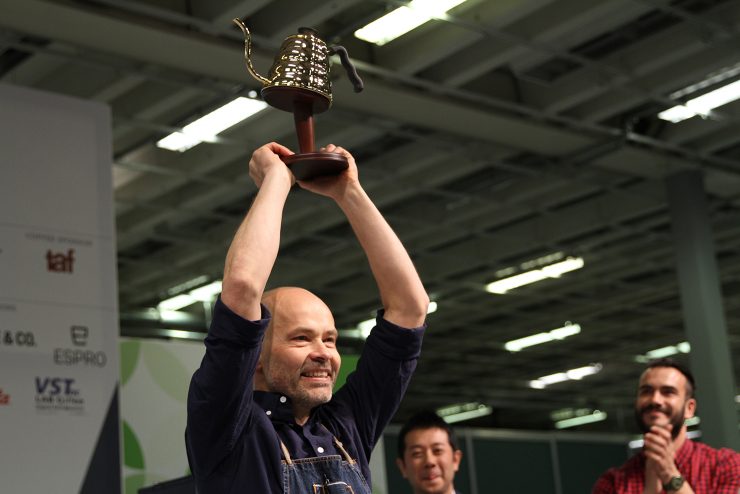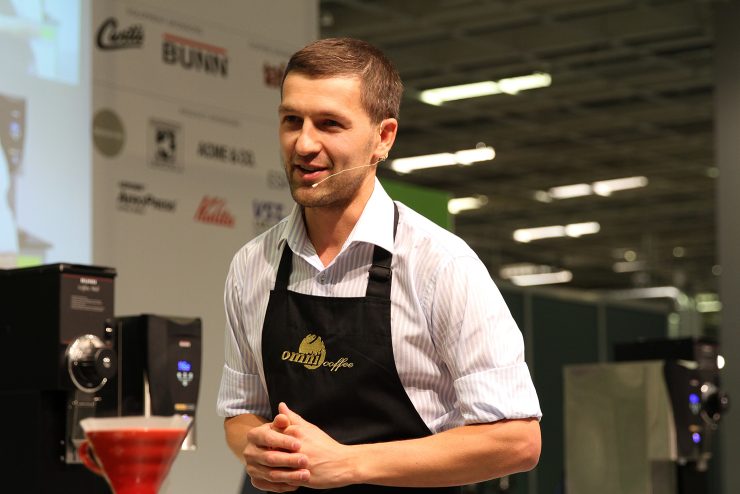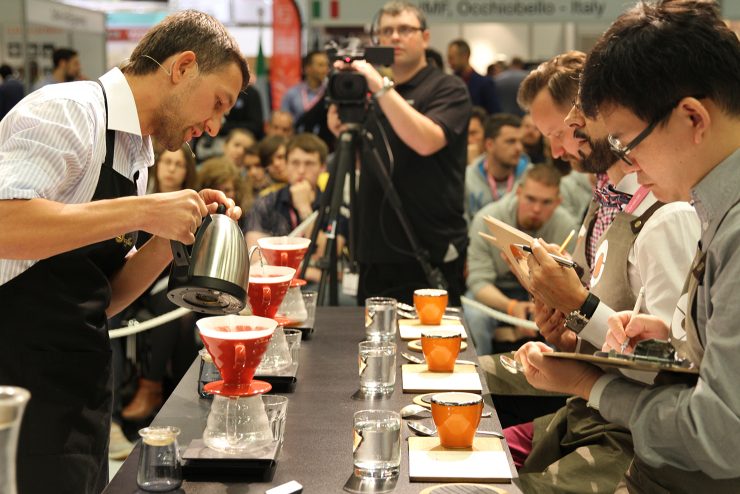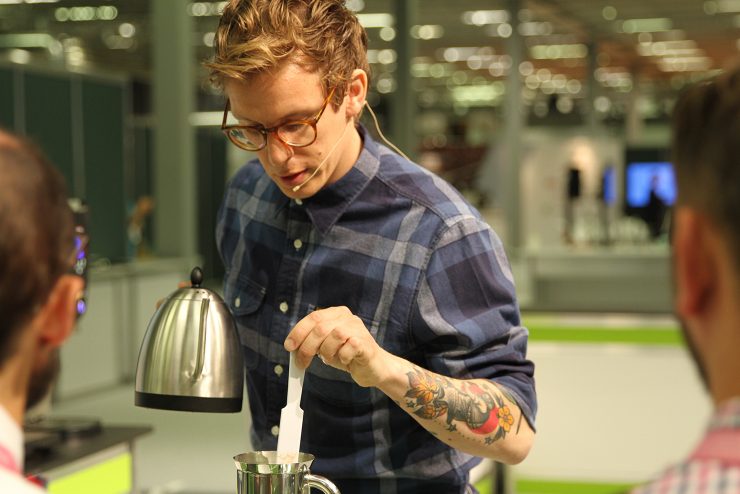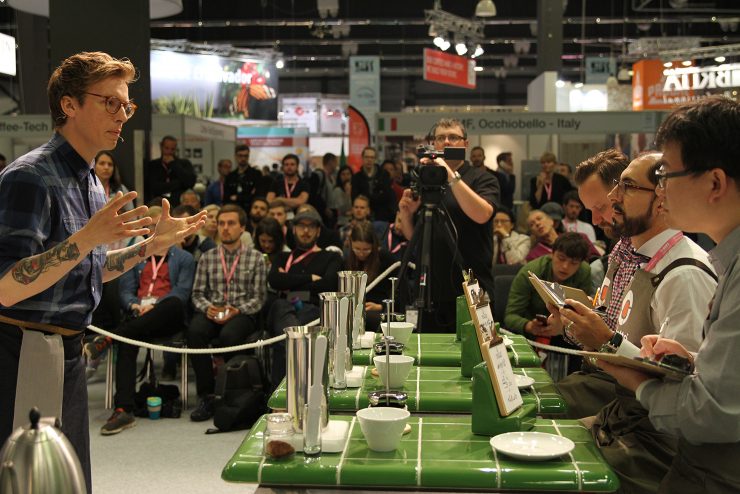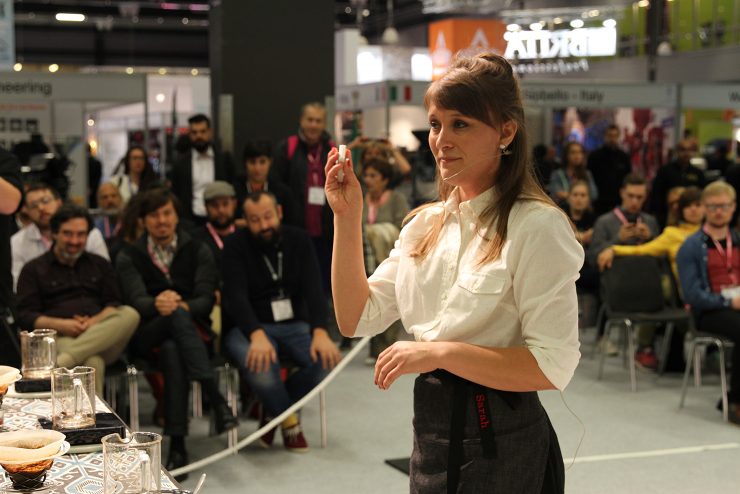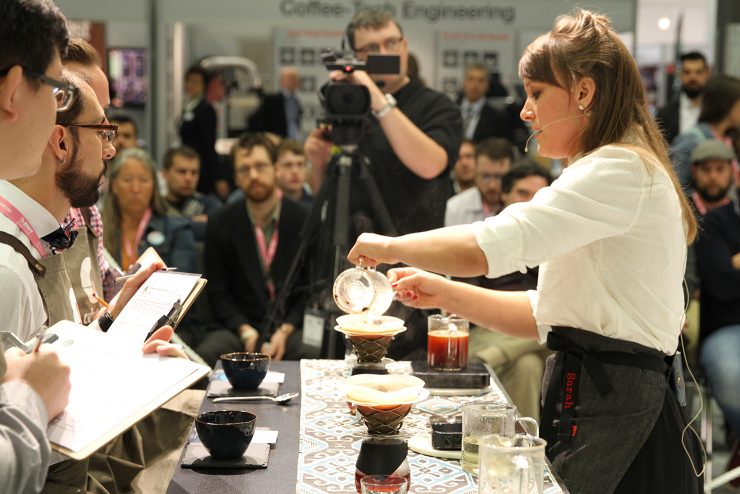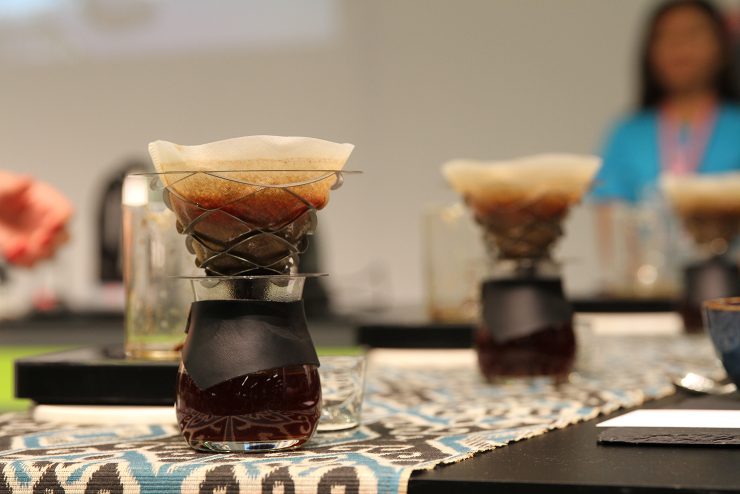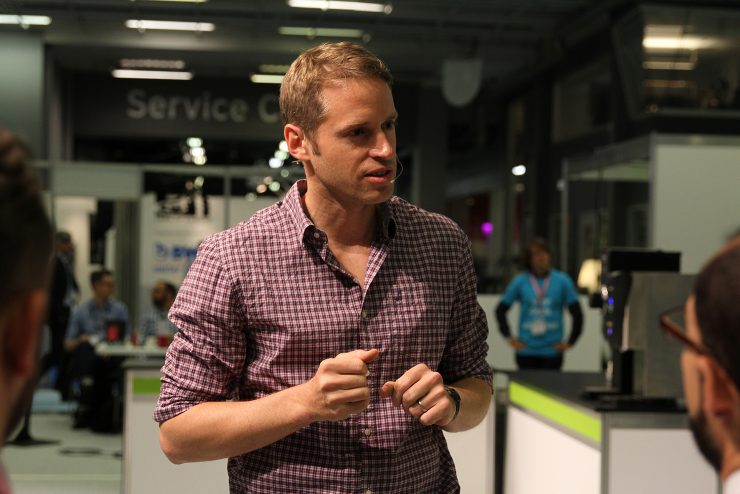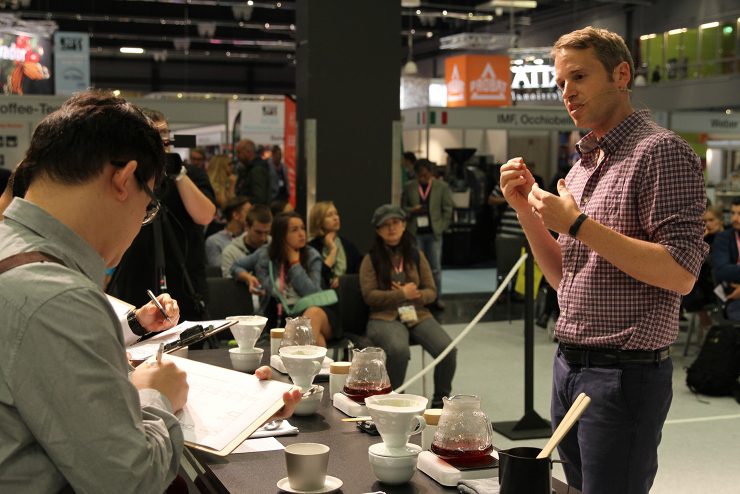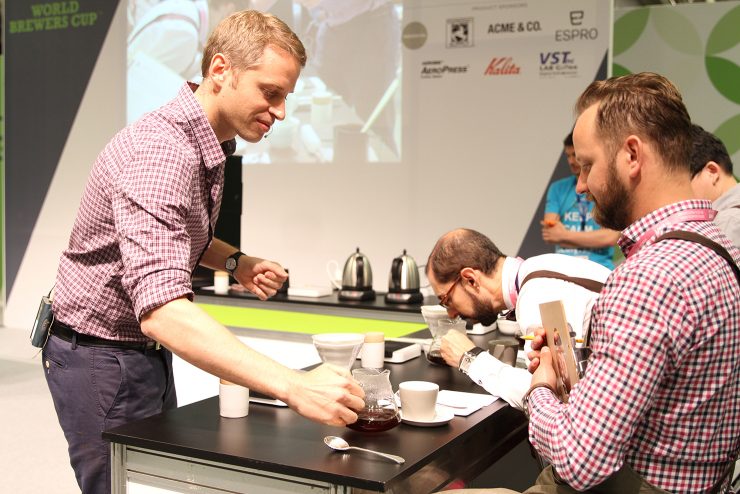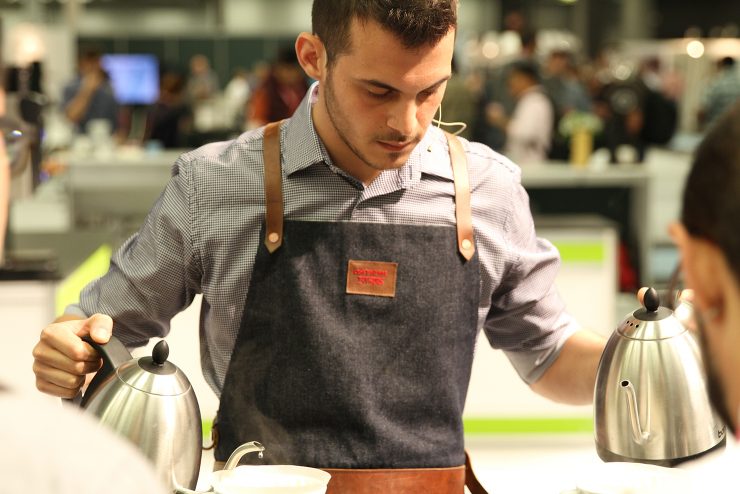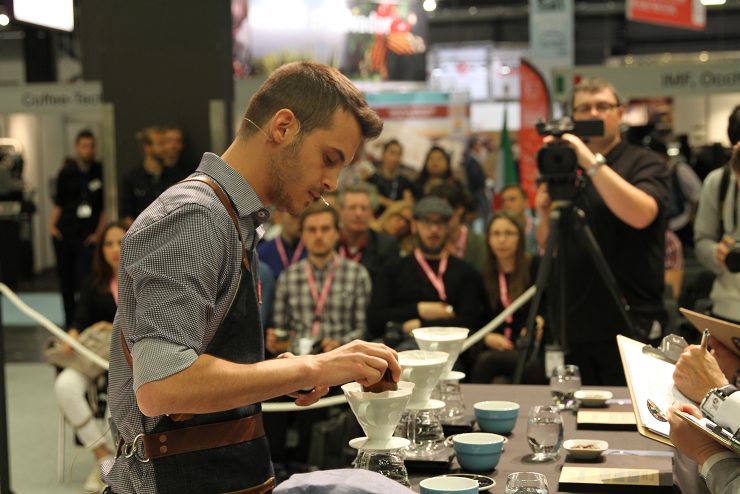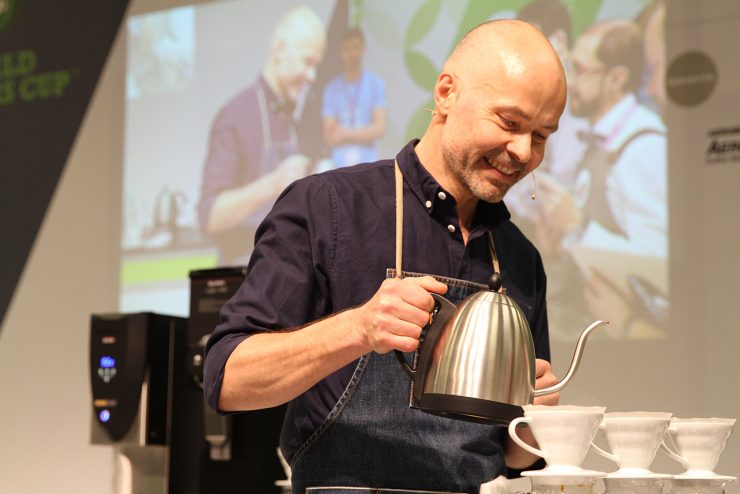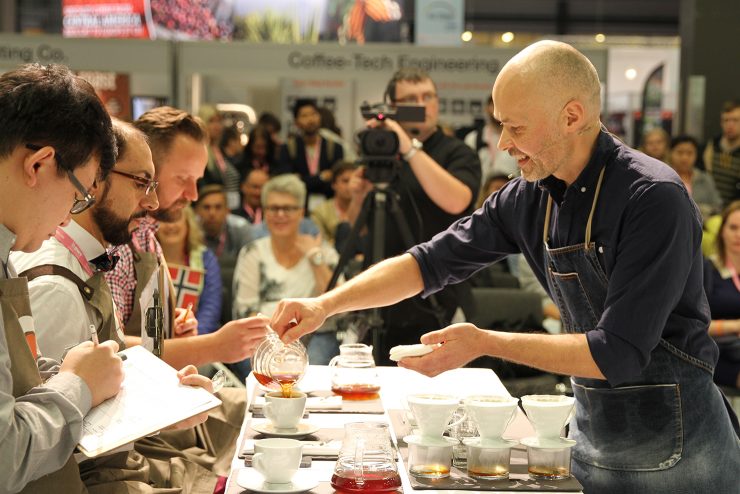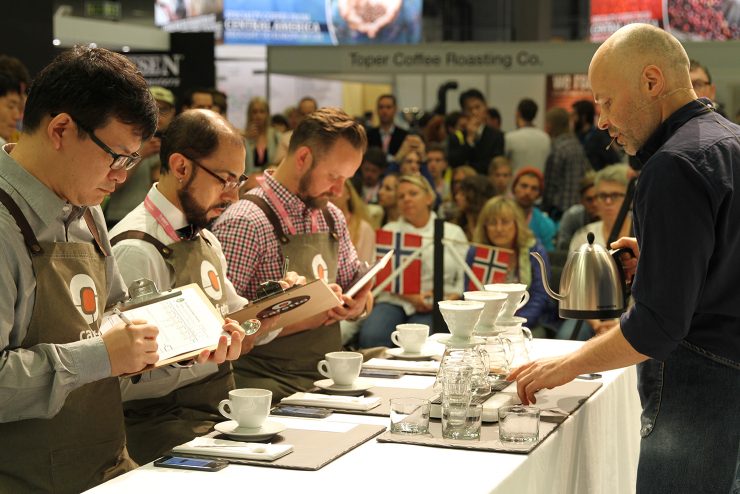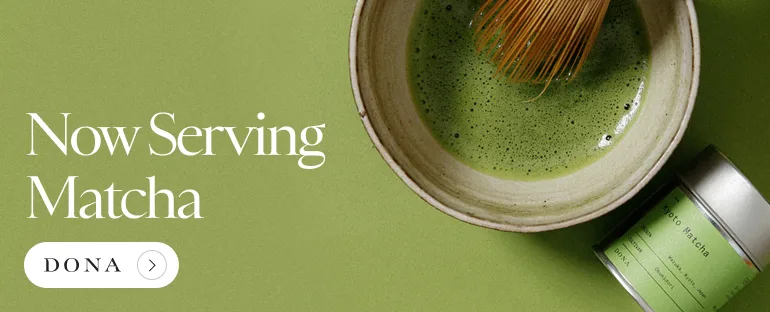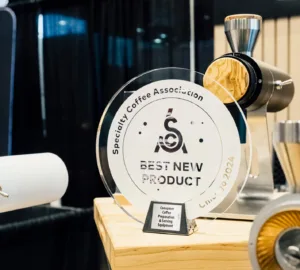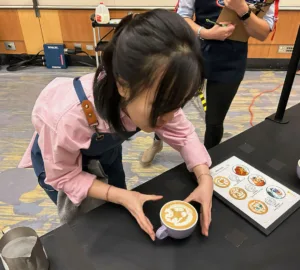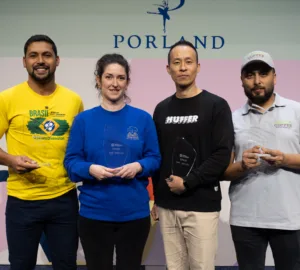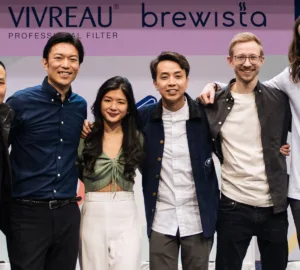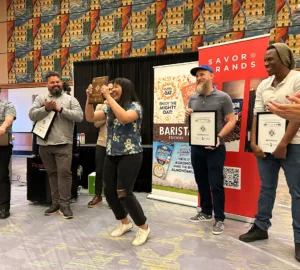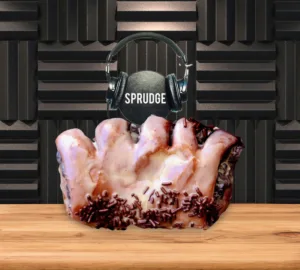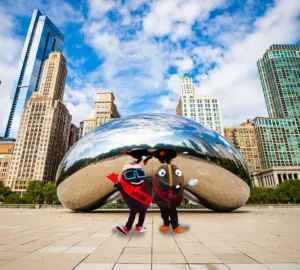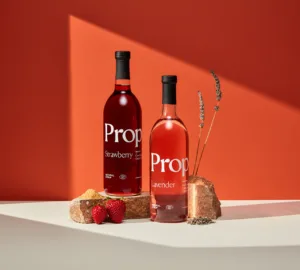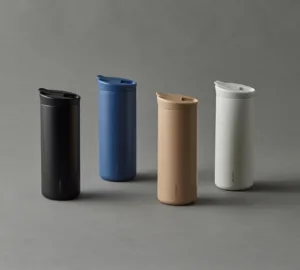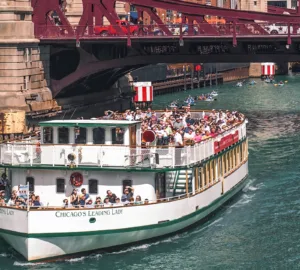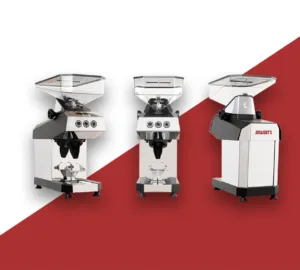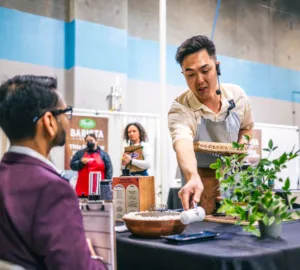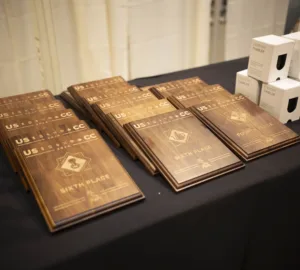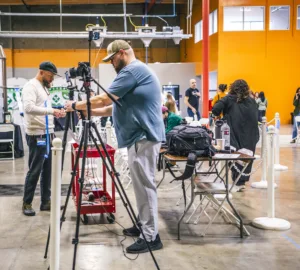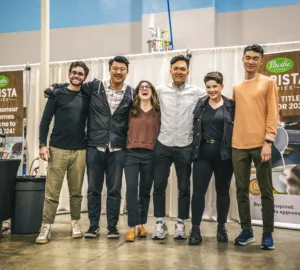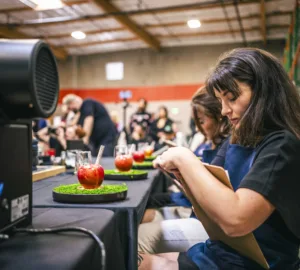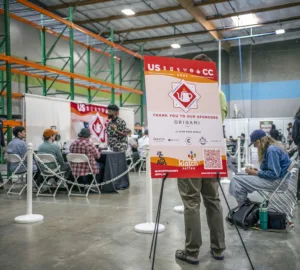Highlighting the craft of manual brewed filter coffee, the World Brewers Cup is a competition that celebrates both skill and service excellence. In front of a panel of judges, competitors from around the world prepare and serve three individual beverages. In the first round, competitors complete both a compulsory and open service. During the compulsory service, competitors prepare coffee with whole bean coffee provided to them by the competition. In the open service, they prepare coffee with any bean of their choice, and along with brewing, give a full presentation in front of the panel of judges.
After a first round with 28 competitors, six made it to the second round, held Thursday, June 18, 2015 in Gothenburg, Sweden at World of Coffee. Here is a rundown of the competition.
Sixth Place: Ruslan Shulga, Omni, Russia
Using a Hacienda La Esmeralda, a natural-processed gesha grown at 1700 meters above sea level, Russian competitor Ruslan Shulga noted that, “a natural coffee is a very sensitive coffee for the purposes of roasting.” In fact, Shulga tested 20 different roasts using different roasters and profiles before selecting the one that he would compete with.
Brewing with a Hario V60 filter cone, Shulga used 15 grams of coffee and 250 grams of water to brew a coffee with juicy, complex acidity. The coffee contained aromas of orange, caramel, and vanilla, with flavor notes of peach ice tea, orange, and caramel, and a medium, sweet orange, acidity. As the coffee cooled, the acidity intensified.
Fifth Place: Rob Kerkhoff, Babo, Netherlands
“Welcome to a miniature version of my [coffee shop] bar,” said Dutch competitor Rob Kerkhoff, opening his presentation. “Every link in the coffee change is buzzing with innovation.” Innovation was certainly present in his presentation, using El Diamante from Costa Rica, processed with anaerobic fermentation. From Catuai and Caturra varieties, the coffee went through a 20-hour fermentation with mucilage. The result is a coffee bean with cinnamon aromas.
Kerkhoff invented his own brew method. “I thought, ‘what do I like?’” said Kerkhoff “One, cupping for the body, and two, Chemex for the clarity.” He paired the two together, using an Espro press with a Chemex filter added to the press filter. He then used 18 grams of ground coffee, and 300 grams of water, at 120 bp, 7.1 pH and at 93°C. Extraction time was 5:30 with frequent stirring for optimal extraction. The final brewed coffee had a light acidity of apple, aftertaste of fresh cinnamon bun, with a light to medium body. Kerkhoff called time at 9:40.
Fourth Place: Sarah Anderson, Intelligentsia Coffee, USA
For her brew, American competitor Sarah Anderson used a coffee from the species eugenioides from Colombia, what Anderson called “the mother of Arabica.” This species of coffee “tastes different,” said Anderson, with intense sweetness and delicate acidity. Around 200 pounds of this coffee were grown last year, but more will come in the future. Grown in a greenhouse, the coffee is “it’s slightly more delicate and needs controlled conditions,” said Anderson, pointing out that the coffee was then put into a stainless steel fermentation tank. Anderson and her team at Intelligentsia in Los Angeles went through more than 80 sample roasts to get to the right one, with some additional roasts done by Copenhagen’s Coffee Collective.
Anderson brewed her coffee with the AltoAir brewing device with a paper filter, using 19 grams of coffee and 300 grams of coffee in a 8:30-minute brew. The “lower dose provides clarity to the brew,” said Anderson. She first filled three glass vessels with the coffee grounds and hot water, letting them sit, then incorporating the crust at about 1:30 minutes. Then Anderson poured the brew through the paper filter in the AltoAir. This method allowed her to bring something new and innovative to the judges. “One of my favorite experiences is serving my customers something new,” said Anderson to the judges. “But you guys are coffee professionals, you’re tasting the best coffees today, so how can I bring you something you’ve never tried before?”
The coffee had an aroma of brown butter and black tea, with a well-structured body that was “exceptionally buttery” with great clarity. Flavor notes of cane sugar sweetness, Genmaicha toasted brown rice tea, and soft, plush cantaloupe, and mallic acidity of a juicy ripe pear.
Third Place: Benjamin Prager, Bear Brothers And Cow, Switzerland
“Kenya is the closest thing to perfection there is to me for coffee,” said Swiss competitor Benjamin Prager as he began his presentation, pointing out the sweet, clean, and intense flavors of coffees from Kenya. Here, natural coffee regions are “close to perfect,” Prager said. His coffee of choice came from the southern slope of Mt. Kenya, near Nyeri, an SL-28/SL-34, grown at 1800 meters of elevation. With its volcanic nutrient-rich soil, the “richness of the soil is reflected in the richness in the coffee,” said Prager.
For his brew method, he chose a Hario V60 filter cone, using 14 grams of sieved coffee, using first a 350-micron stainless steel mesh sieve and secondly a 250-micron stainless steel mesh sieve. Using 236 grams of water, he poured a 30-gram bloom. Instead of using a pulse pour, Prager added the water all at once for a steady temperature decline, which he pointed out helps to add a silky body to the coffee.
Washed and dried in raised beds, the coffee was harvested in December and stored in a multi-layer plastic GrainPro bags. For aroma, Prager noted floral, elderflower, red and black currant. A light to medium body, almost like tea with a taste of blueberries, blue grapes and black currant. Prager called time just under 10 minutes.
Second Place: Konstantinos Latridis, Taf, Greece
Using a micro-lot natural gesha from Panama, Greek competitor Konstantinos Latridis brewed a Hario V60 filter cone, using 15 grams of coffee and 250 milliliters of water. Latridis did a 30-second pre-infusion with water at 96°C, then used a different water after the bloom.
Latridis explained to the judges that he had chosen to brew using the V60 method as with the paper filter, it gives total control and clarity. He highlighted the tasting notes of light berries, chocolate, stone fruit, and an aroma of magnolia, black honey, and white tea. With its floral notes and juicy body taste, Latridis pointed out that this was a “natural coffee that tastes like a washed.” Latridis called time at 9:32.
First Place: Odd-Steinar Tollefsen, Supreme Roastworks, Norway
Using a Nekisse, natural processed, Ethiopian from Ninety Plus, Norwegian competitor Odd-Steiner Tollefsen called his coffee “a further improvement of Nekisse.” This coffee was shade dried. “It’s almost dangerous to say too much about this coffee, because the coffee speaks for itself,” said Tollefson, also pointing out that only seven bags of this coffee were ever made. This coffee was about “how good coffee can taste when your palate is having the time of its life,” said Tollefsen.
Brewing with a Hario V60 filter cone, Tollefsen used 20 grams of coffee and 300 grams of water at 92°C, with a 45-second bloom. Total extraction time was 3:30. Tollefsen used natural mineral water from the West Coast of Norway, a water with a low mineral content for softness and smoothness.
To give the judges real-time brew data, Tollefsen used Acaia digital scales that were connected via Bluetooth to iPhones. Tollefsen’s brewed coffee had intense sweet, ripe tropical fruit aroma, as well as apricot, mango, and passion fruit. Tasting notes were ripe tropical fruit, apricot, mango, passion fruit, dried apricot, and strawberry, with a sweet lingering aftertaste and an elegant acidity of passion fruit and mango. Tollefsen called time just under 10 minutes.
Liz Clayton and Anna Brones contributed to this report. Photos by Liz Clayton for Sprudge. For more coffee sports coverage, visit Sprudge Live.











